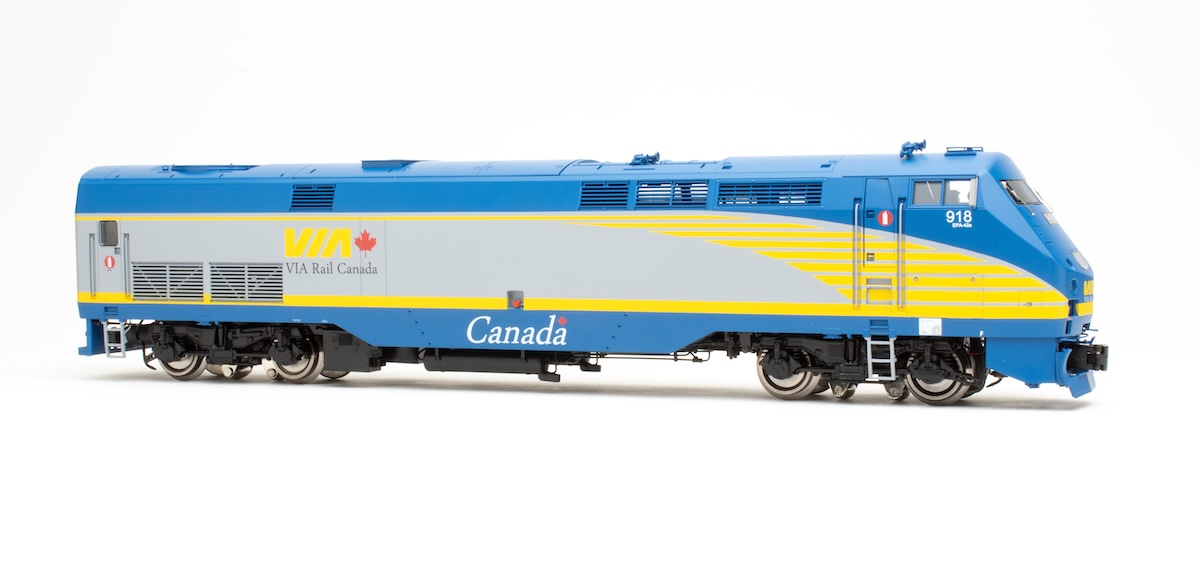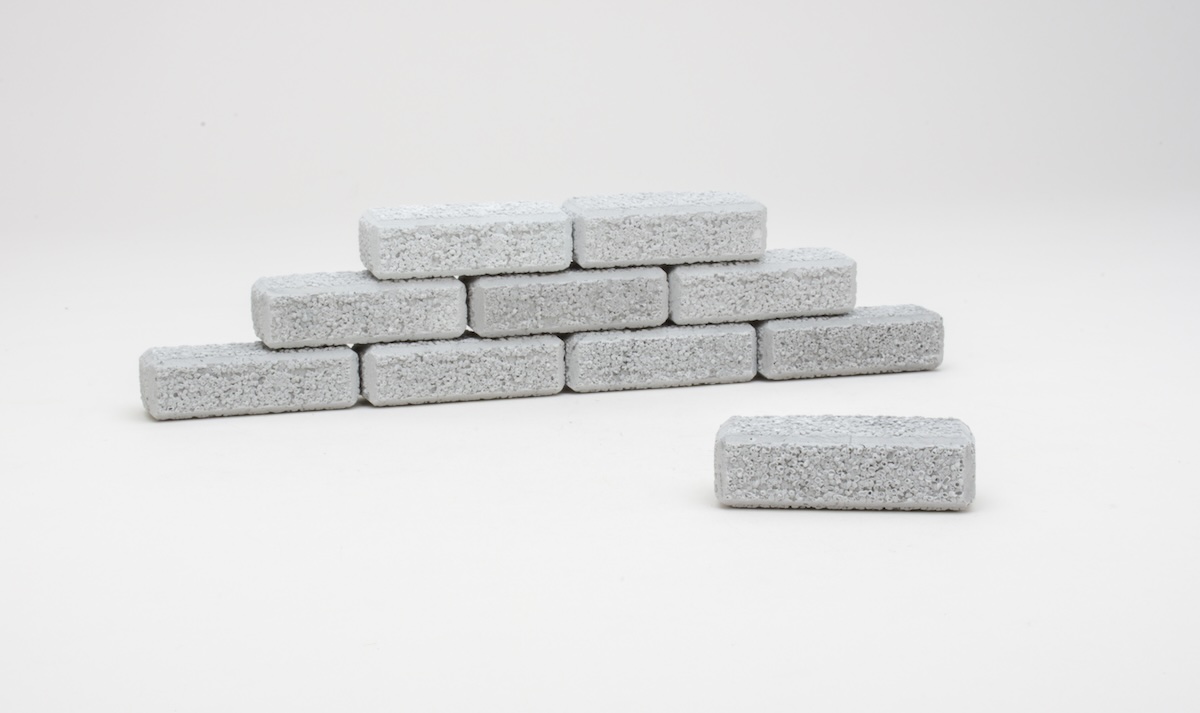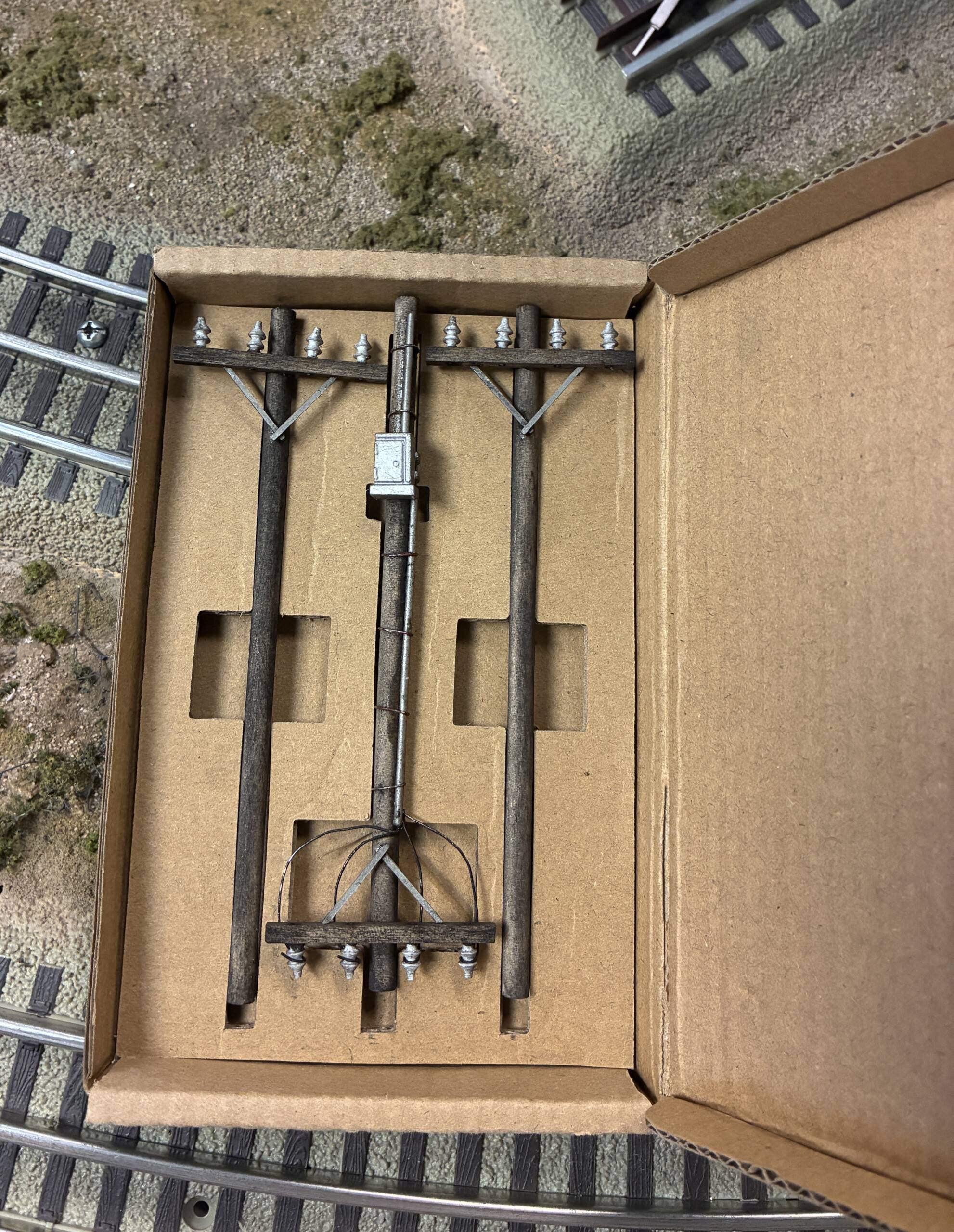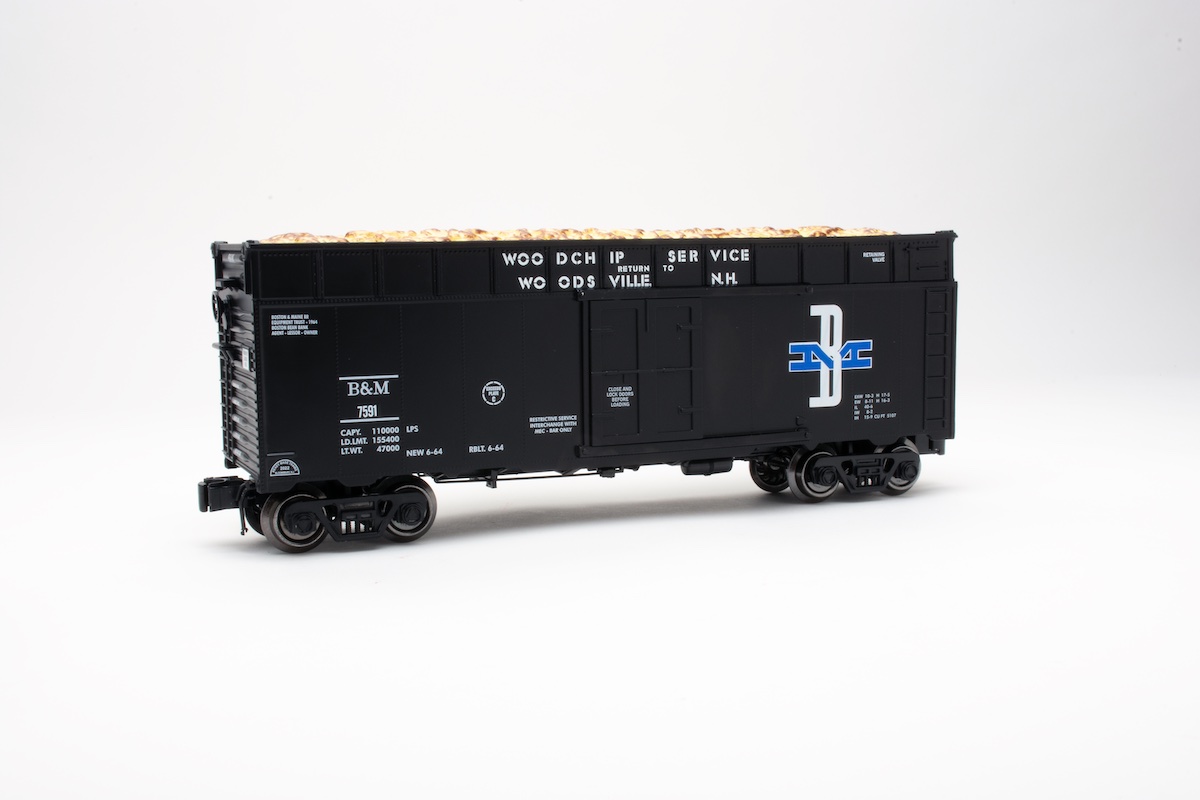This giant from Baldwin was a 3,000-horsepower rig that housed two 1,500-horsepower diesel engines. Though far from being a commercial success, the Centipede did explore the concept of a comparatively super-powered locomotive – a concept later expanded with varying degrees of success by General Electric U50, and EMD DD35s and DD40s.
A total of 54 Centipedes were built. The Pennsy locomotives were semi-permanently coupled in an A-A combination with a drawbar. The Seaboard and National Railways of Mexico locomotives were not so limited. Seaboard’s Centipedes were gone by 1960, and the Mexican locomotives continued in service until 1971.
Opening the box
Removing a lone O gauge Centipede is much easier than popping a twin set out of a container. So bonus points go to Lionel for selling these one at a time. But why would you want individual units when, in the case of the Pennsylvania RR, they were famous for A-A pairings?
Well, buying one unit is cheaper than buying two units, but I have a more operational outlook on this.
I bought an MTH Centipede outfit that I reviewed in the May 2000 issue of Classic Toy Trains. As with the Pennsy prototype, it was basically semi-permanently coupled because it had only one reverse unit and required a tether between the two A units. I would have loved to have had the freedom to double-head them with both cabs facing forward. With two individual A units, you can create a lash-up and run them any way you desire!
This O gauge locomotive is pretty hefty – the two can-style motors and all that die-cast metal for truck sideframes really add up! But once the model was out of the box, the impish baby face made me smile.
The nose of the locomotive has an interesting pilot that mirrors the Baldwin original. There are some slight differences; the most important is that there’s an ample area for the swinging of the coupler.
The nose access hatch has grab irons on both sides, and the classification lights and headlights are illuminated.
The windows are large, which must have made for an exceptionally good field of vision for train crews.
My impression is that the figures are a tad too small, and so they couldn’t enjoy this great view at all.
In the center of the cab roof is an add-on horn. Just behind the horn is a rise in the carbody that I believe contributes to the baby face look.
The long sides each have two doors that are hinged to open. The doorframes have add-on grab irons, and there are additional steps mounted on the truck sideframes. There are 14 air-intake screen panels on the sides: two forward, two aft, and 10 in the middle. There are also six groups of louvers above the center filter array on the lip of the roofline.
There is plenty of detail topside.
Above the cab you’ll find a battery access hatch (where you connect the 9-volt backup battery) held on with magnets. This was the only point of irritation I had with the model. It seemed like every other time I picked up the locomotive and had the roof at an angle, the darn thing fell off!
There is ample rivet and seam detail, as well as add-on details that model latches for rooftop access hatches.
There are two exhaust ports for the smoke units, and you fill both smoke units at these points.
Near the front and rear are what appear to be two long wood decks. I checked some prototype information, and these were listed as access hatches. The front one is just that – it allows access to the controls for two smoke units, volume, run/program, and speed-control switches.
In the center of the carbody are four rotating fans! My eyes were focused on that area when I powered up the model for the first time, and it was a nice visual treat.
One rooftop feature that makes most early Pennsy diesels stand out is the radio antenna. You will note that this version does not have one. Since the Pennsylvania RR used the locomotives as semi-permanently coupled, the line installed an antenna on a single unit since the radio could be used from either cab.
The companion Centipede that Lionel offers for sale does have a radio antenna. Our receiving the antenna-less unit was simply the (bad) luck of the draw.
The rear of the locomotive has a rubber diaphragm. The model also comes with a shorter diaphragm you can substitute for the longer rig.
Painting and decoration are first rate. The long five-stripe paint scheme looks terrific, and the paint and letter application is superb. Oddly, the builder’s plate is not an add-on detail but is simply an outline painted on the shell.
I was also puzzled that the plate has “Water” printed right below it. But I checked prototype photos, and, sure enough, the word “Water” was stenciled below the plate, apparently referring to a pipe beneath the cab that isn’t present on the model.
On the test track
With eight powered axles, there are a lot of wheels and gears on this baby, so take care to grease the gears and oil the axles on the Centipede before it hits your three-rail road.
Applying track power for the first time, I was impressed. I would have sworn that the first sound I heard was an electrical “zit-zit” almost like Dr. Frankenstein was firing up his Jacob’s Ladder to get the locomotive prime mover to turn over.
Stating what may be obvious, this locomotive requires O-72 curves. It isn’t one of those O-72 titans that can kinda sorta maybe squeeze through an O-54 curve.
The sound system is outstanding. The prime mover sounds are deep and powerful, and the routine idle noises are realistic. When the Centipede was running at low speeds, I’d swear I heard the sound of springs creaking under the weight of the locomotive’s movement.
According to Lionel’s Director of Audio Rudy Trubitt, the sounds are from Magma Arizona RR no. 10, a Baldwin DRS 6-6-1500 that uses the same Baldwin 608SC diesel engine as the Centipede. That vintage diesel, which can be found at the Arizona Railway Museum in Chandler, is operational and is occasionally used for switching chores at the facility.
I liked the robust horn, and the bell was nice as well.
Smoke output was choking. After a few minutes of running this model in my basement, I felt compelled to turn off the smoke and turn on the basement air filter.
Motor operation was very smooth in conventional or command modes, and the locomotive was quick to respond.
Our conventional low-speed average was 5.3 scale miles per hour, while the command-mode low speed was 3 scale miles per hour. Our high-speed average was a wild 125 scale miles per hour! And yes, I did make a one-handed grab for the locomotive as it entered an O-72 curve at that speed.
Drawbar pull for this monster was 3 pounds, 7 ounces.
A look back at my May 2000 review of the MTH Centipede A-A shows that the Lionel model has a slower low-speed, a higher high-speed, and a single-unit drawbar pull that nearly matched the older double-unit’s pull. Thirteen years makes a difference, indeed.
So the shorthand version of the review is that the Lionel Centipede looks outstanding and has powerful pulling, smooth operation, and totally authentic sounds. I’d definitely classify this one as a “keeper.”
Features: O-72 operation; two can-style motors; Lionel Legacy command, sound, and speed-control system; two coil couplers; two smoke units















Did it have any Crew talk? I didn't hear it in the video .
I bot the original MTH Centipede in 2000, AA units and kept in the box until this year. Had to replace the battery, oil & grease, etc. Runs good, but had to turn off the horn & smoke units. Fast track has to be altered to keep the horn off for some reason. O72 works ok but, has big over hang…looks awesome as AA with some 60' passenger cars… run it conventional w/legacy remote controller off TMCC track control. Paid $700. in 2000 for both units. Guess I got a good deal…